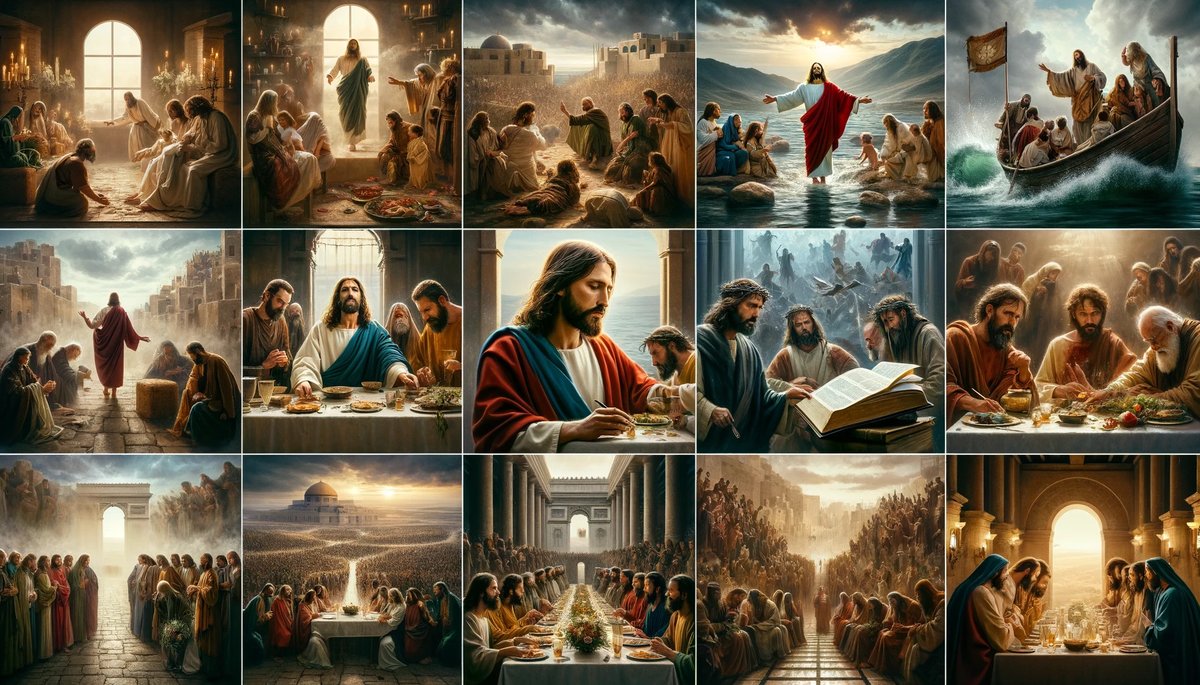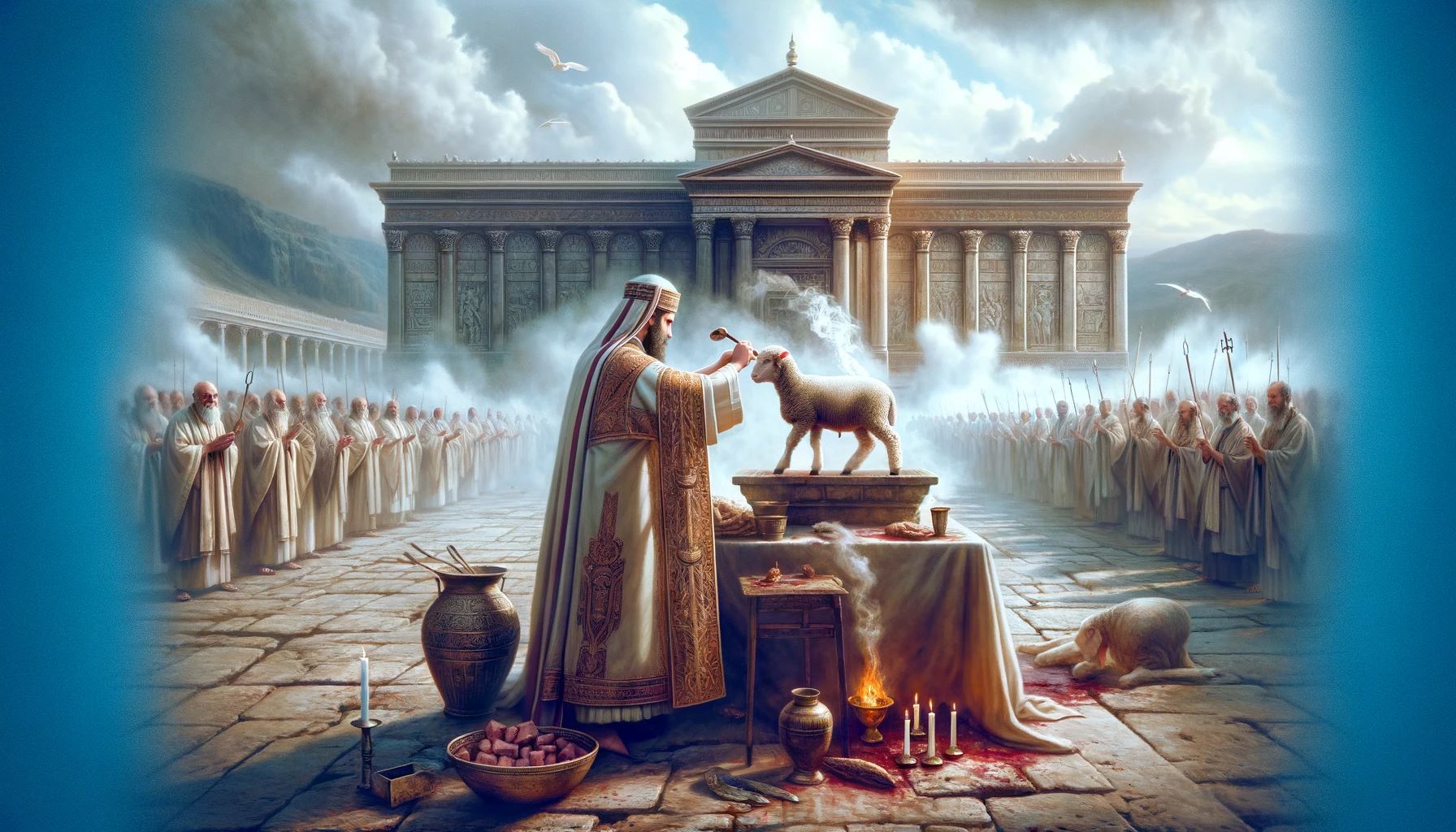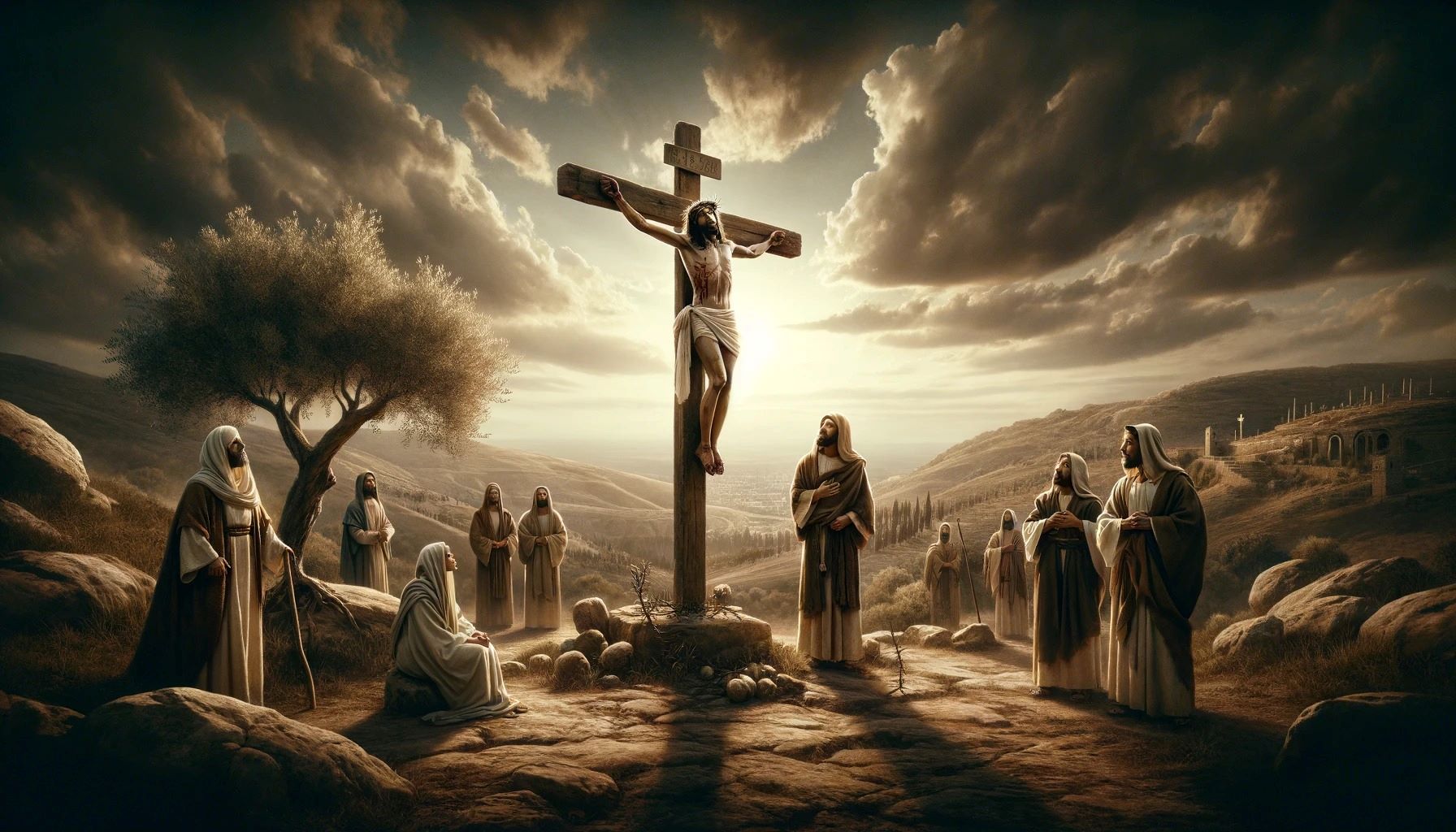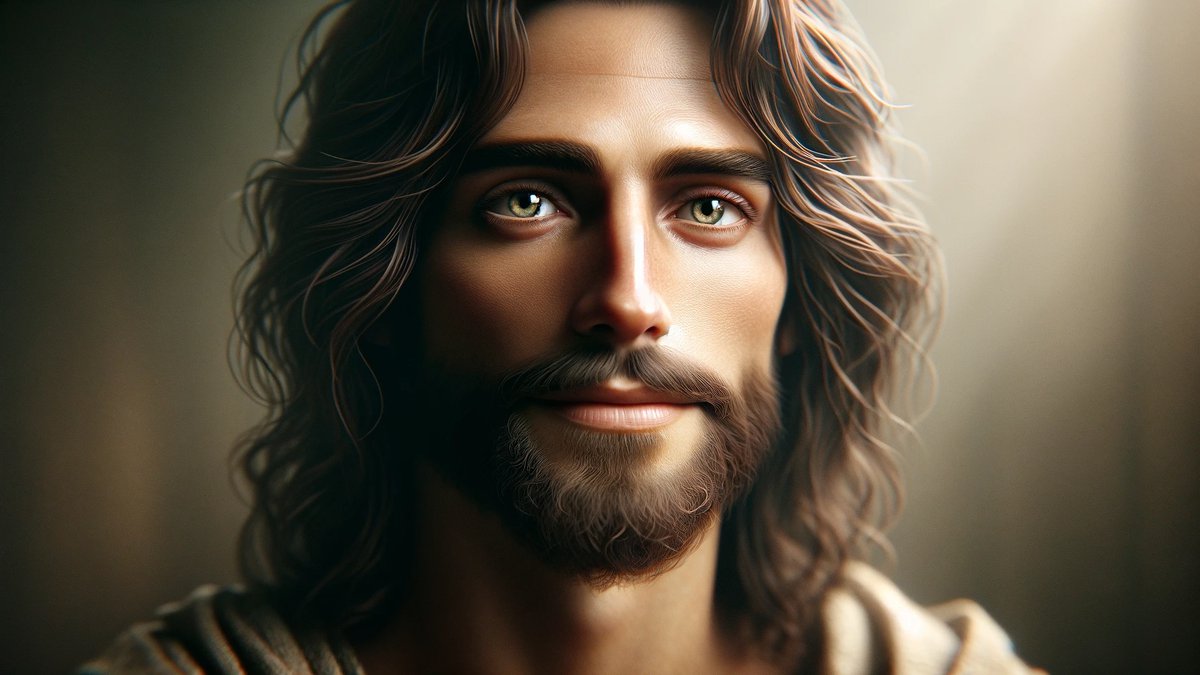Home>Christian Videos>Bible Stories>Where Is Jesus Christ In The Old Testament


Bible Stories
Where Is Jesus Christ In The Old Testament
Published: March 1, 2024
Jason DeRose, Managing Editor at Christian.net, uses his expertise in religion and journalism to deepen understanding of faith's societal impacts. His editorial leadership, coupled with a strong academic background, enriches the platform’s diverse content, earning him recognition in both journalism and religious circles.
Discover the presence of Jesus Christ in the Old Testament through captivating Bible stories. Uncover the timeless connection between the Old and New Testaments.
(Many of the links in this article redirect to a specific reviewed product. Your purchase of these products through affiliate links helps to generate commission for Christian.net, at no extra cost. Learn more)
Table of Contents
Introduction
Where is Jesus Christ in the Old Testament? This question has intrigued theologians and believers for centuries. The Old Testament, which predates the birth of Jesus by many centuries, contains numerous references, prophecies, and foreshadowings of the coming of Jesus Christ. Understanding the presence of Jesus in the Old Testament not only deepens our appreciation of the Bible's continuity but also sheds light on the profound interconnectedness of the two major divisions of the Christian scriptures. In this article, we will explore the various ways in which Jesus Christ is present in the Old Testament, from theophanies to prophecies and the fulfillment of promises.
Read more: Where Is Baptism In The Old Testament
Theophanies of Jesus in the Old Testament
Theophanies, or appearances of God, are significant events in the Old Testament that provide glimpses of the divine nature. Some theologians believe that certain theophanies in the Old Testament actually involve appearances of Jesus Christ before His incarnation. These theophanies serve as powerful indicators of Jesus' presence in the Old Testament, offering a foreshadowing of His eventual coming. Here are some notable theophanies in the Old Testament that are believed to be appearances of Jesus:
-
The Angel of the Lord: In several instances in the Old Testament, a figure referred to as "the Angel of the Lord" appears to individuals. This figure not only speaks with divine authority but also accepts worship, which is reserved for God alone. Many scholars interpret these appearances as pre-incarnate manifestations of Jesus Christ.
-
The Three Visitors to Abraham: In Genesis 18, Abraham receives three visitors, one of whom is identified as the Lord. This visitor speaks with the authority of God and foretells the birth of Isaac, demonstrating divine knowledge and power. Many Christians view this visitor as a theophany of Jesus Christ.
-
The Burning Bush: When Moses encounters the burning bush in Exodus 3, he experiences a profound encounter with the divine. The voice from the bush identifies itself as the God of Abraham, Isaac, and Jacob. This encounter is often seen as a theophany, with Jesus Christ being the divine figure speaking to Moses.
These theophanies provide compelling evidence of Jesus' presence in the Old Testament, offering believers a deeper understanding of the continuity of God's revelation throughout the biblical narrative.
Prophecies about the coming of Jesus in the Old Testament
The Old Testament is replete with prophecies that foretell the coming of a savior, the Messiah, who would bring salvation and redemption to humanity. These prophecies, written centuries before the birth of Jesus Christ, serve as compelling evidence of His presence in the Old Testament. Here are some of the most significant prophecies about the coming of Jesus in the Old Testament:
-
The Virgin Birth: In the book of Isaiah, a prophecy declares, "Behold, the virgin shall conceive and bear a son, and shall call his name Immanuel" (Isaiah 7:14). This prophecy, often cited in the New Testament in reference to the birth of Jesus, foretells the miraculous conception of the Messiah by a virgin.
-
The Lineage of David: The Old Testament contains numerous prophecies about the Messiah being a descendant of King David. In Jeremiah 23:5-6, it is prophesied, "I will raise up for David a righteous Branch, and he shall reign as king and deal wisely, and shall execute justice and righteousness in the land." This lineage is fulfilled in the New Testament, where Jesus is identified as a descendant of David.
-
The Suffering Servant: In Isaiah 53, a poignant prophecy describes a suffering servant who would bear the sins of many. This prophecy aligns with the sacrificial death of Jesus Christ, who is often regarded as the fulfillment of the suffering servant foretold in the Old Testament.
-
The Bethlehem Prophecy: Micah 5:2 prophesies, "But you, O Bethlehem Ephrathah, who are too little to be among the clans of Judah, from you shall come forth for me one who is to be ruler in Israel, whose coming forth is from of old, from ancient days." This prophecy is fulfilled in the New Testament, as Jesus, the Messiah, is born in Bethlehem.
-
The New Covenant: The prophet Jeremiah speaks of a new covenant that God will make with His people, one that involves the forgiveness of sins and the internalization of God's law. This prophecy finds its fulfillment in the life and teachings of Jesus Christ, who inaugurates the new covenant through His sacrificial death and resurrection.
These prophecies, among many others in the Old Testament, serve as powerful testimonies to the presence of Jesus Christ in the biblical narrative, demonstrating the intricate tapestry of divine revelation woven throughout the scriptures.
Types and shadows of Jesus in the Old Testament
Throughout the Old Testament, there are numerous types and shadows that prefigure the coming of Jesus Christ. These symbolic representations, often found in people, events, and institutions, serve as powerful foreshadowings of the person and work of Jesus. Understanding these types and shadows deepens our appreciation of the Old Testament as a rich tapestry of divine revelation, pointing towards the ultimate fulfillment in Jesus Christ. Here are some notable examples of types and shadows of Jesus in the Old Testament:
-
The Sacrificial Lamb: The sacrificial system in the Old Testament, particularly the offering of unblemished lambs for the atonement of sins, serves as a profound foreshadowing of Jesus Christ as the ultimate sacrificial lamb. The imagery of the lamb, its innocence, and its role in providing atonement for sins find their fulfillment in the sacrificial death of Jesus on the cross.
-
Joseph as a Type of Christ: The story of Joseph in the book of Genesis contains numerous parallels to the life of Jesus. Joseph, betrayed by his brothers, unjustly accused, and ultimately exalted to a position of authority, serves as a powerful type of Christ, who was also betrayed, unjustly condemned, and exalted to the right hand of God.
-
The Bronze Serpent: In the book of Numbers, Moses is instructed to construct a bronze serpent and lift it up on a pole, so that anyone bitten by a venomous snake could look at it and be healed. Jesus Himself refers to this event, stating, "Just as Moses lifted up the snake in the wilderness, so the Son of Man must be lifted up, that everyone who believes may have eternal life in him" (John 3:14-15). This imagery of the serpent lifted up as a means of healing serves as a powerful type of the crucifixion of Jesus and the salvation He offers to all who believe in Him.
-
The Passover Lamb: The institution of the Passover in the book of Exodus, where the blood of a lamb protects the Israelites from the judgment of God, is a profound type of Jesus Christ as the ultimate Passover lamb whose blood brings salvation and deliverance from sin and death.
-
The High Priest: The role of the high priest in the Old Testament, particularly on the Day of Atonement, serves as a type of Jesus Christ as the ultimate high priest who mediates between God and humanity, offering Himself as the perfect sacrifice for the sins of the world.
These types and shadows, among many others in the Old Testament, serve as powerful indicators of Jesus' presence and redemptive work throughout the biblical narrative, highlighting the intricate design of God's plan of salvation woven throughout history.
Jesus as the fulfillment of Old Testament promises
The Old Testament is replete with promises and prophecies concerning the coming of a Messiah who would bring salvation, redemption, and restoration to God's people. Jesus Christ, as revealed in the New Testament, is presented as the fulfillment of these profound promises, demonstrating the intricate tapestry of divine providence woven throughout the biblical narrative. His life, death, and resurrection serve as the ultimate realization of the Old Testament promises, validating His identity as the long-awaited Messiah. Here are some key aspects of Jesus as the fulfillment of Old Testament promises:
1. Fulfillment of Messianic Prophecies
Jesus fulfills numerous specific prophecies from the Old Testament that were written centuries before His birth. These prophecies encompass various aspects of His life, including His birthplace (Micah 5:2), lineage (Isaiah 11:1), ministry (Isaiah 61:1-2), and suffering (Isaiah 53). The New Testament repeatedly references these prophecies to demonstrate how Jesus' life aligns with the expectations set forth in the Old Testament, affirming His role as the promised Messiah.
2. Completion of the Law and Prophets
In the Sermon on the Mount, Jesus declares, "Do not think that I have come to abolish the Law or the Prophets; I have not come to abolish them but to fulfill them" (Matthew 5:17). This statement underscores Jesus' role as the fulfillment of the Old Testament scriptures, embodying the culmination and completion of God's redemptive plan as revealed through the law and the prophets.
3. Establishment of the New Covenant
The Old Testament anticipates the establishment of a new covenant that would supersede the Mosaic covenant, offering forgiveness of sins and intimate communion with God (Jeremiah 31:31-34). Jesus inaugurates this new covenant through His sacrificial death and resurrection, fulfilling the prophetic promise of a renewed relationship between God and humanity.
4. Redemption and Restoration
The Old Testament is replete with promises of redemption, restoration, and the establishment of God's kingdom. Jesus' atoning sacrifice on the cross fulfills these promises, providing redemption from sin, reconciliation with God, and the anticipation of a future restoration of all things in His second coming.
5. Universal Savior
The Old Testament promises concerning the Messiah extend beyond the borders of Israel to encompass the entire world. Jesus' fulfillment of these promises transcends cultural and geographical boundaries, offering salvation to all who believe in Him, in accordance with the universal scope of the Old Testament promises.
In summary, Jesus Christ stands as the fulfillment of the Old Testament promises, embodying the culmination of God's redemptive plan, the fulfillment of Messianic prophecies, the establishment of a new covenant, and the universal Savior who brings redemption and restoration to all who embrace Him in faith. His life and ministry serve as the ultimate validation of the enduring faithfulness of God in fulfilling His promises throughout history.













